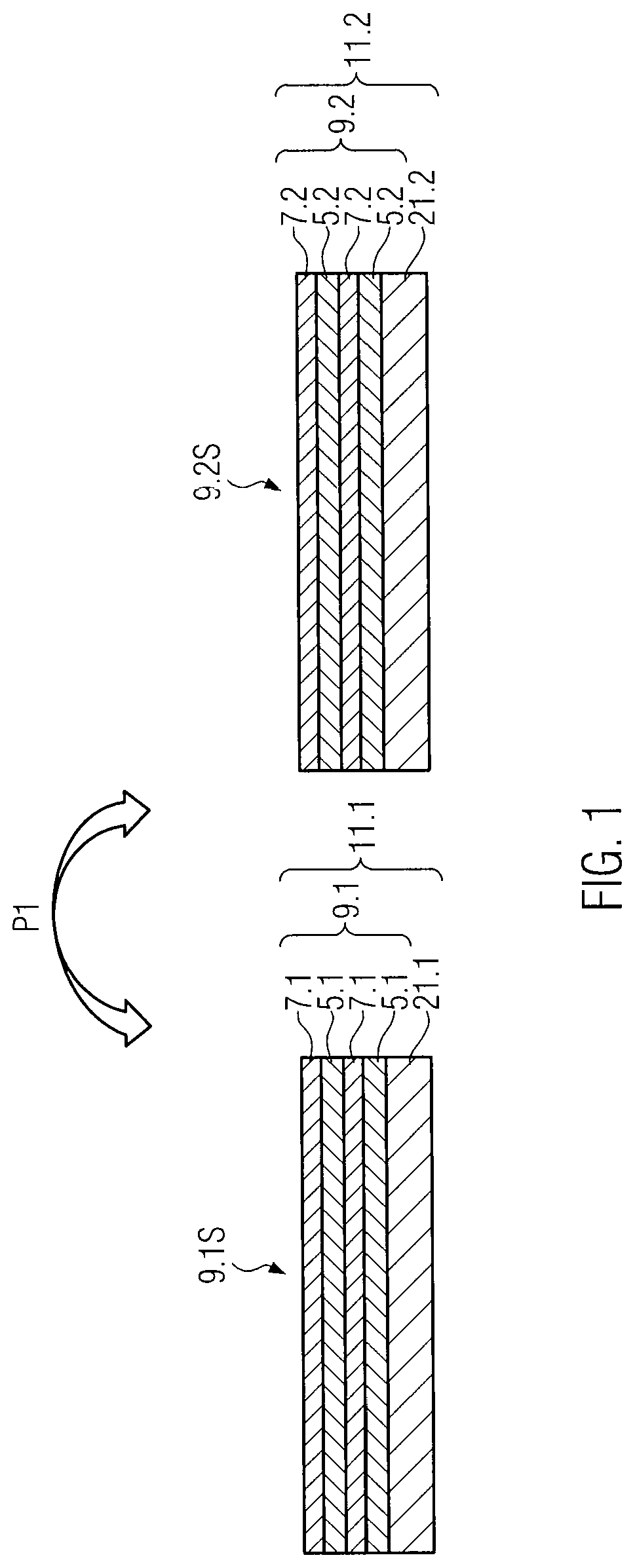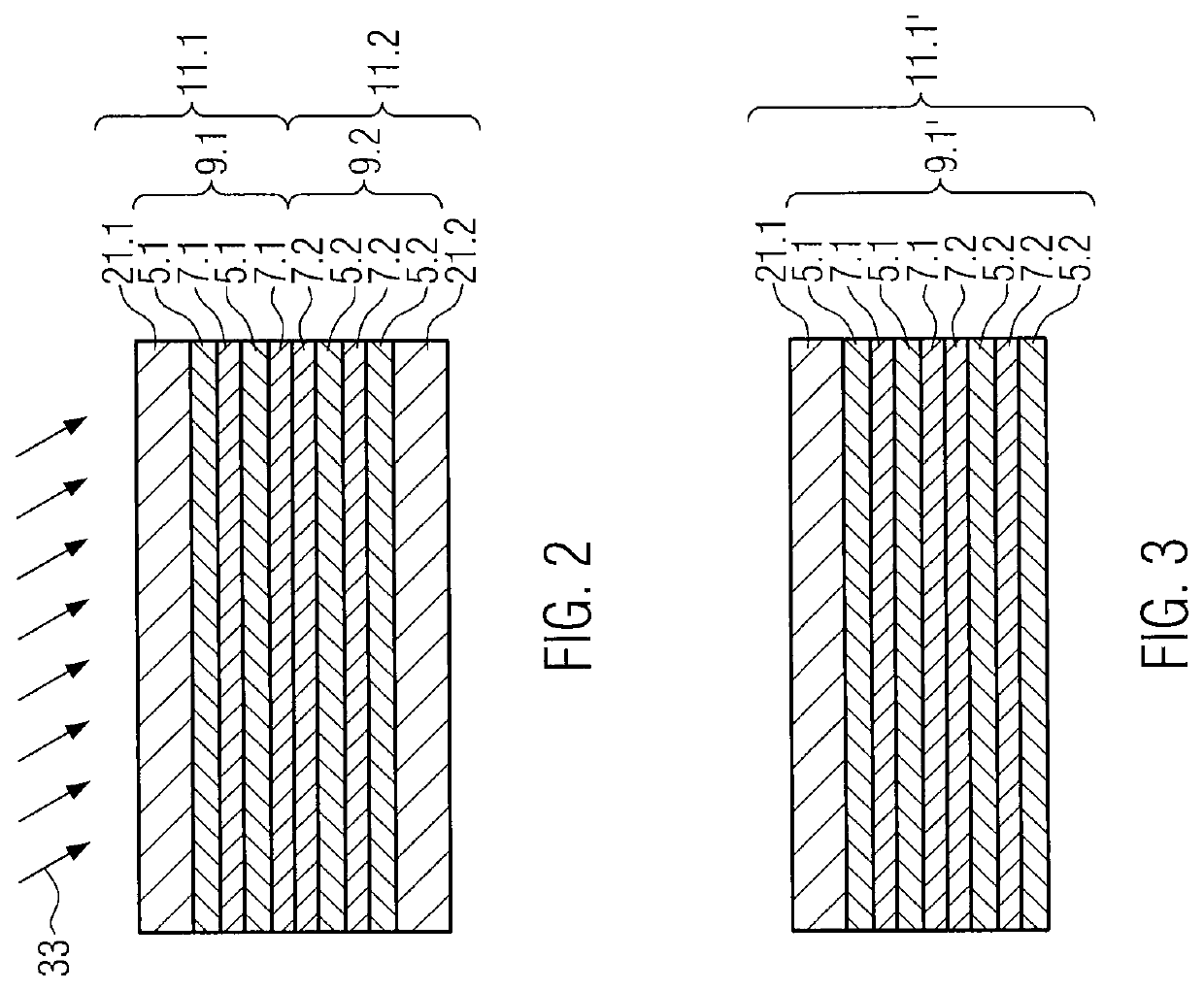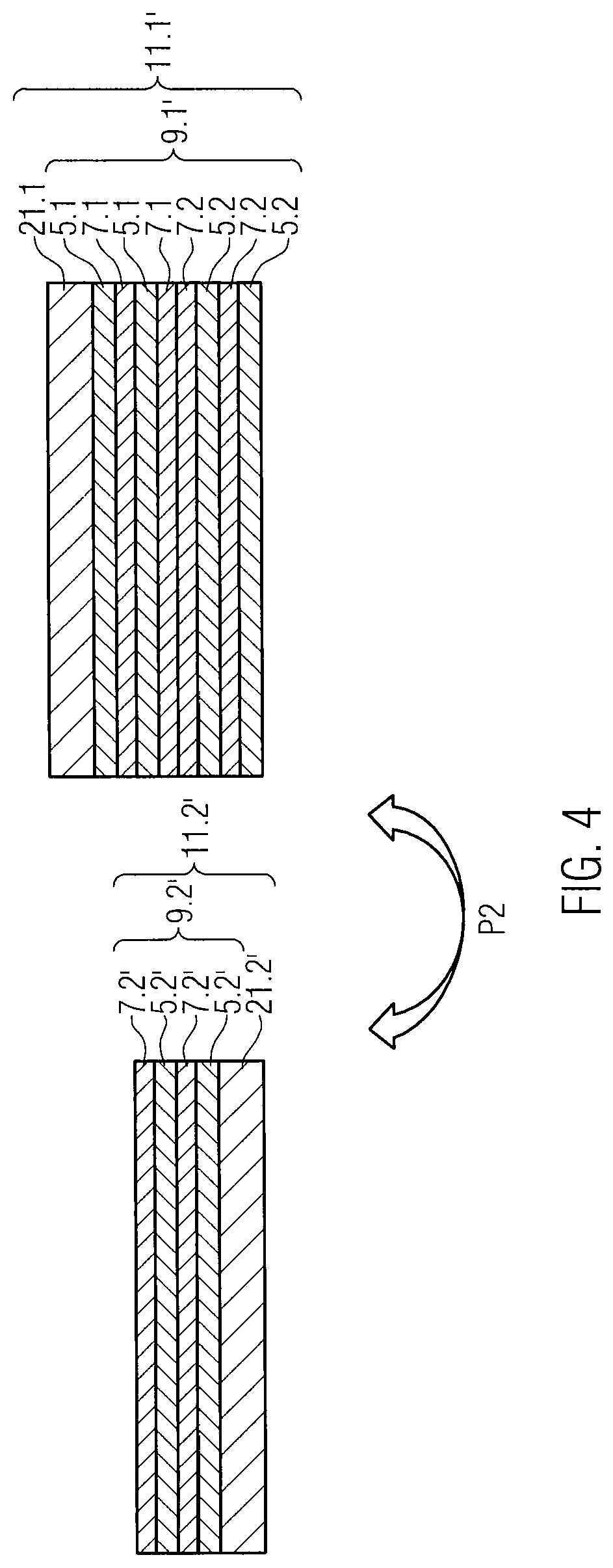Substrate-transferred stacked optical coatings
- Summary
- Abstract
- Description
- Claims
- Application Information
AI Technical Summary
Benefits of technology
Problems solved by technology
Method used
Image
Examples
Embodiment Construction
[0047]FIG. 1 illustrates a side view of an optical coating 9.1 provided on a host substrate 21.1 which form a base coating structure 11.1. The optical coating 9.1 may be denoted as a first optical coating and the host substrate 21.1 may be denoted as a first host substrate. The optical coating 9.1 may comprise layers 5.1 and 7.1. In an oversimplified schematic drawing the optical coating 9.1 is illustrated having only four layers 5.1, 7.1, respectively, provided in an alternating way. It should be understood, however, that the coating 9.1 typically comprises many more layers. The maximum reflectivity of the coating may be determined by the refractive index contrast of the individual layers, the total number of layers, as well as the refractive index of the substrate—asymptotically approaching a reflectivity of 100%. The number of layers for the present example may be about 40 pairs of layers, i.e. 80 total layers, but other numbers of layers such as 100-120 total layers may be used ...
PUM
 Login to View More
Login to View More Abstract
Description
Claims
Application Information
 Login to View More
Login to View More - R&D
- Intellectual Property
- Life Sciences
- Materials
- Tech Scout
- Unparalleled Data Quality
- Higher Quality Content
- 60% Fewer Hallucinations
Browse by: Latest US Patents, China's latest patents, Technical Efficacy Thesaurus, Application Domain, Technology Topic, Popular Technical Reports.
© 2025 PatSnap. All rights reserved.Legal|Privacy policy|Modern Slavery Act Transparency Statement|Sitemap|About US| Contact US: help@patsnap.com



